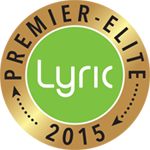
Technology improves fast: in 2005, the typical 40-inch flat screen TV would’ve cost you over $1,500. Now, 10 years later, you can purchase a 40-inch flat screen TV for about $230.
The same has occurred with hearing aids, although it’s more likely to escape our notice. We notice that TVs become bigger, better, and less costly, but we’re blind to the progressions in hearing aids because we’re not bombarded with advertising and giant store exhibits.
Nevertheless, hearing aids, along with all other consumer electronics, have progressed dramatically over the past 10 years. If analog hearing aids are like the cumbersome 15-inch-tube-TVs of the past, modern day digital hearing aids are like the lightweight 65-inch-Ultra-High-Definition TVs of the present.
Here’s what makes modern hearing aids considerably better, beginning with the technology that makes it all achievable.
Digital Technology
Hearing aids, like all electronics, have reaped the benefits of the digital revolution. Hearing aids have come to be, in a way, miniaturized computers, with all of the coding versatility you’d expect from a contemporary computer.
The consequence is a gadget that is small, lightweight, energy efficient, and proficient at manipulating information—information being, in the case of a hearing aid, sound.
So how do contemporary hearing aids manipulate sound? Let’s use an analogy: picture inbound sound as incoming mail and the digital hearing aid as a mailroom.
As mail is received, it’s identified, labeled, stored, and consequently delivered to the appropriate recipients. Similarly, digital hearing aids can take incoming sound and can label certain frequencies to be delivered to the amplifier. Speech sounds, for instance, can be labeled as important and sent to the speaker for amplification. Likewise, background noise can be labeled as “undeliverable” and returned.
Analog hearing aids didn’t have this “mailroom” function. Incoming sound is delivered all at once—like if the mail clerk were to give you everyone’s mail and you had to sort through the clutter yourself to find your own. Speech simply gets lost in the mix with background noise, and you have to work tirelessly to dig it out.
Hearing Aid Advanced Features
Digital handling of information is the key to everything a modern hearing aid can accomplish. Here are some of the advanced features associated with modern hearing aids that digital technology helps make possible:
- Speech recognition – digital hearing aids can distinguish and enhance speech with digital processing and directional microphones.
- Background noise suppression – background noise is a lower frequency sound, which the hearing aid can identify and suppress.
- Clearer phone calls – telecoil technology amplifies the signal from your phone, producing clear sound without interference.
- Wireless streaming – hearing aids equipped with Bluetooth technology can connect to devices wirelessly, so you can stream music, phone calls, and TV programs straight to your hearing aids.
- Wireless control – compatible hearing aids can be operated with smartphones and digital watches, so you can effortlessly and discreetly adjust volume and settings.
Trial Your New Digital Hearing Aids
As you have seen, digital hearing aids are robust pieces of contemporary technology. That’s why virtually all cases of hearing loss can now be successfully treated, and why the majority of people are satisfied with the performance of their hearing aids.
If you’d like to test drive this new technology for yourself, give us a call and inquire about our trial period.






